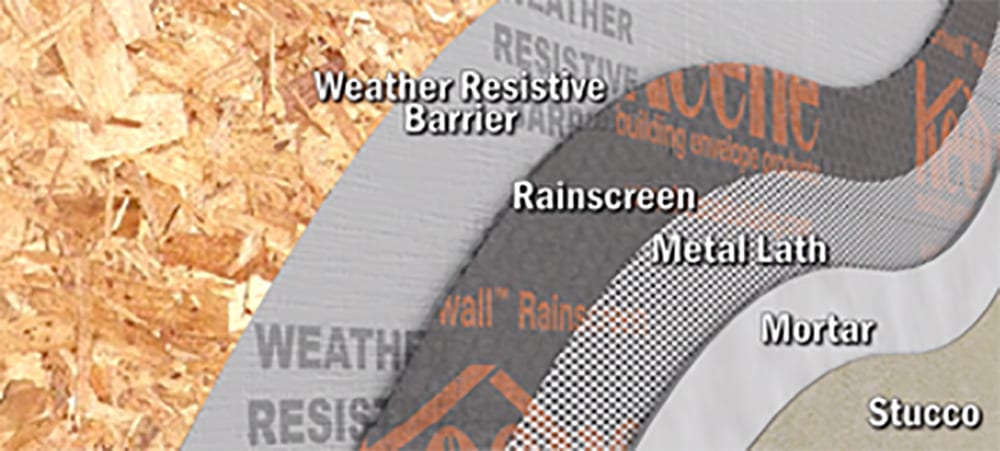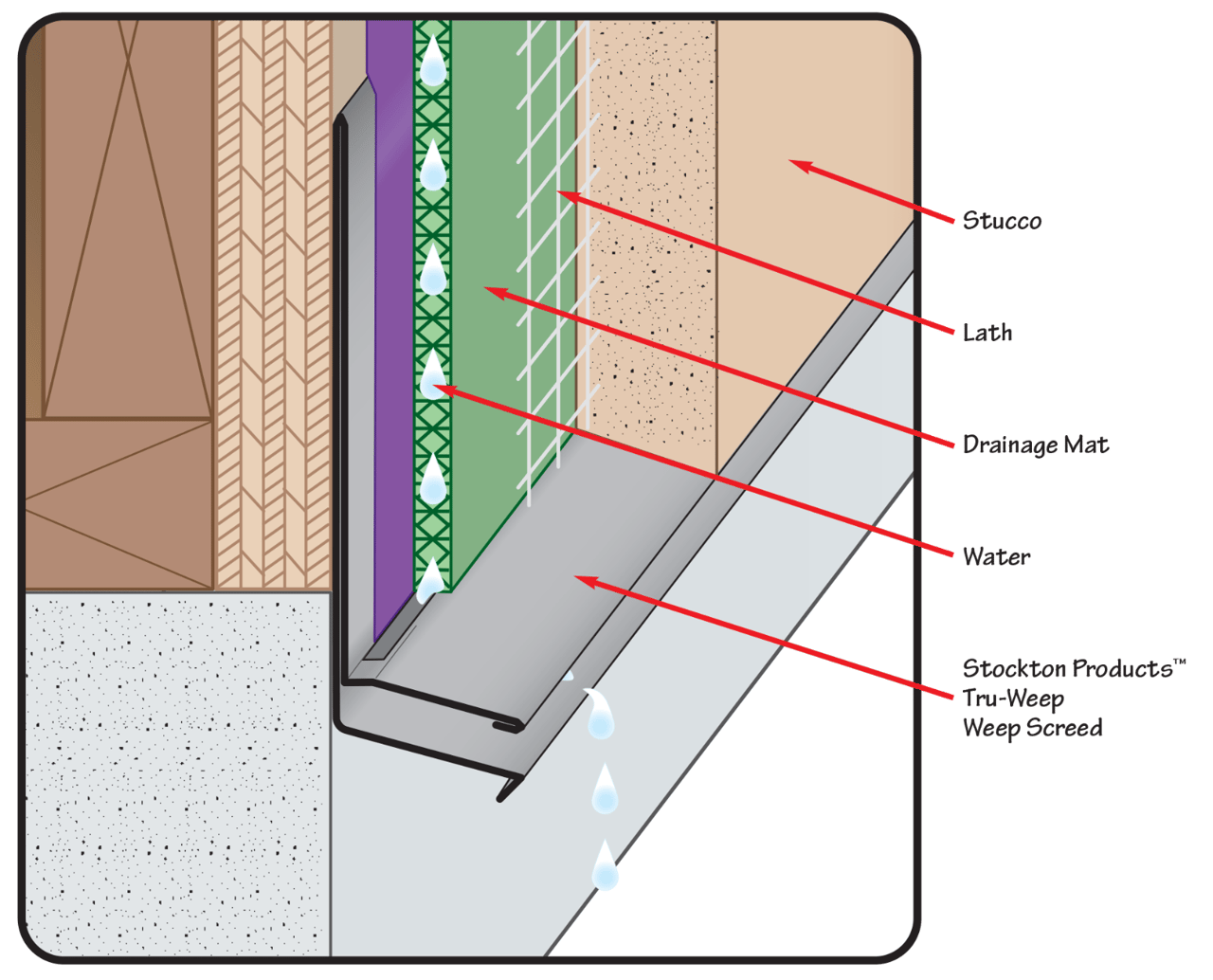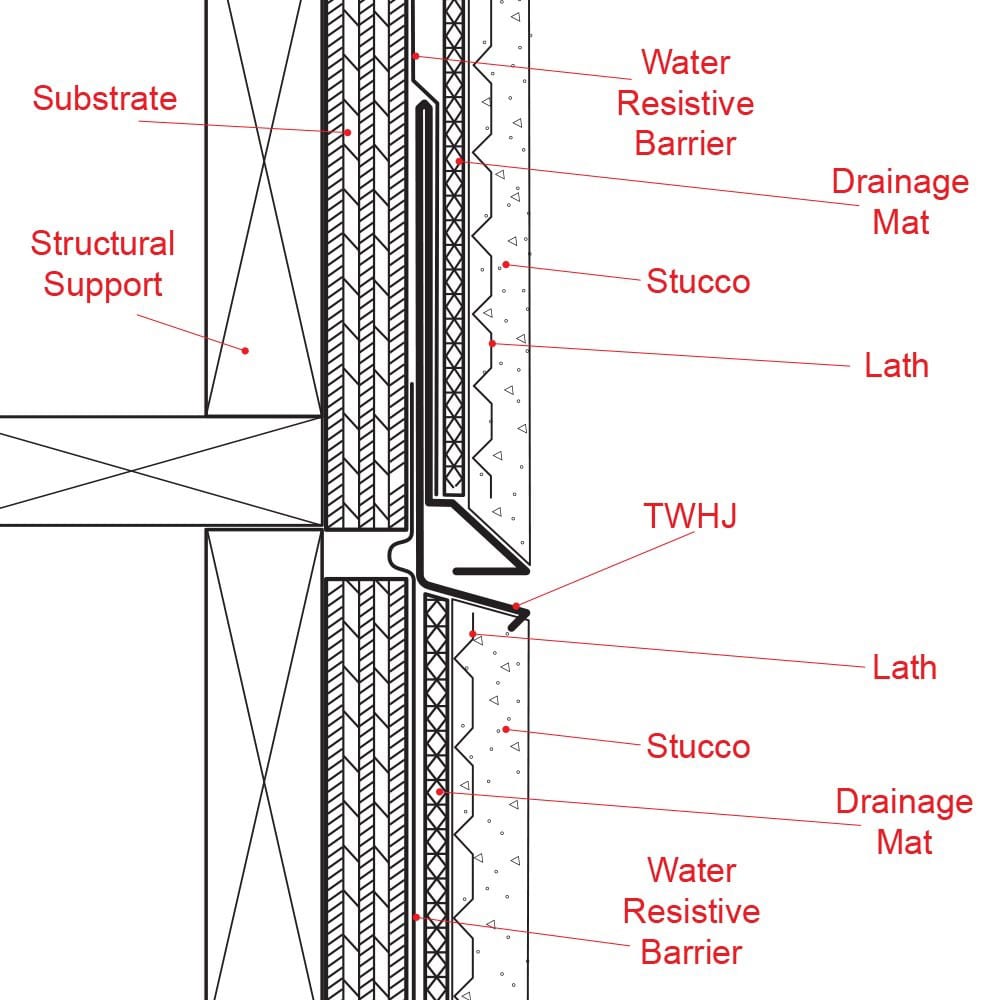Ever Changing,
Ever Improving
A rundown of the changes/improvements for stucco assemblies over wood-based sheathing as recently published in the 2021 IBC.
By Don Pilz
The 2021 IBC has now been published, and with it came some significant changes/improvements for stucco assemblies over wood-based sheathing. As a builder, designer, architect or even inspector, it will be important to know what those changes are. This article will address the changes and some useful improvements made to the Portland cement stucco water-resistive barrier provisions per the 2021 IBC.
But First, Why the Change?
Portland cement (conventional) stucco, anchored masonry, brick veneers, adhered masonry veneers, and anchored brick masonry can absorb and store significant amounts of rainwater. Eventually, solar-driven drying occurs after the rain and inward vapor drives can exceed the amount of outward vapor drives. This will typically result in elevated exterior sheathing moisture contents. Needless to say, excessive moisture content in the exterior wall can lead to a host of other issues. For this reason, some enhanced practices are essential to protect the moisture-sensitive portions of the wall assembly from getting damp from inward vapor drives.
The 2021 editions of International Building Code and International Residential Code drainage mat manufacturers and stucco accessory manufactures have effectively responded.
Where Can I Find the Change?
Section 2510.6 of the IBC 2021 as follows:
- 2510.6 Water-resistive barriers. Water-resistive barriers shall be installed as required in Section 1403.2 and, where applied over wood-based sheathing shall comply with Section 2510.6.1 or Section 2510.6.2.
- 2510.6.1 Dry climates. One of the following shall apply for dry (B) climate zones:
- The water-resistive barrier shall be two layers of 10-minute Grade D paper or have a water resistance equal to or greater than two layers of water-resistive barrier complying with ASTM E2556, Type I. The individual layers shall be installed independently such that each layer provides a separate continuous plane and any flashing, installed in accordance with Section 1404.4 and intended to drain to the water-resistive barrier, is directed between the layers.
- The water-resistive barrier shall be 60-minute Grade D paper, or have a water resistance equal to or greater than one layer of water-resistive barrier complying with ASTM E2556, Type II. The water-resistive barrier shall be separated from the stucco by a layer of foam plastic insulating sheathing or other non-water absorbing layer.
2510.6.2 Moist or marine climates. In moist (A) or marine (C) climate zones, water-resistive barrier shall comply with one of the following:
- In addition to complying with Item 1 or 2 of Section 2510.6.1, a minimum 3/16 inch (4.8 mm) space shall be added to the exterior side of the water-resistive barrier.
- In addition to complying with Item 2 of Section 2510.6.1, a space with a minimum drainage efficiency of 90 percent as measured in accordance with ASTM E2273 or Annex A2 of ASTM E2925 is added to the exterior side of the water-resistive barrier.
This change will impact a large portion of the United States. The International Energy Conservation Code divides the United States into climate zones, and the result is that a very major portion of the United States will fall under the new requirement.

Water resistant barrier for Portland cement plaster-framed walls. Credit: Stucco Manufacturers Association
The important change is the addition of a 3/16-inch-thick drainage mat material or open plane between the water-resistive barrier and the cement plaster. This new requirement then covers Types III, IV and V, which includes a significant portion of the IBC-built multifamily construction market. The wording in the International Residential Code is similar, so this change will impact all forms of residential construction where wood-based sheathing is specified.
What Have the Manufacturers Done to Comply with the Changes?
Drainage mats have been around for years in below grade waterproofing, and more recently many building envelope consultants have been implementing drainage mats into stucco assemblies. Today, there are several brands and types of drainage mats to choose from that can drain excess moisture and improve ventilation. Drainage mats can be made from a polymer core of fused entangled filaments, plastic dimpled boards, or textured housewrap to name just a few.

Rainscreen (drainage mat) used in a stucco assembly. Credit: Keene Building Products
However, when it comes to purchasing the accessories for stucco assemblies utilizing drainage mat it can be a little tricky. Reason being, most manufacturers roll form all their stucco accessories in predetermined ground sizes for traditional stucco assemblies. Traditional stucco ground sizes are between 3/8 inch and 7/8 inch and they are readily available nationwide. When utilizing drainage mat, which can be anywhere between 3/16 to 1/2 inch thick, into the stucco assembly, it will change the overall ground size of the stucco accessory. These types of stucco accessories will require 1-1/8 to 1½ inch ground size.
Stucco accessory manufacturers are just now starting to catch on and some will offer custom ground sizes. Other manufacturers are taking an active lead in this area and are not only offering custom ground sizes, but are also offering stucco accessories that will maximize the drainage. Both drainage and ventilation can be maximized when the open weep slots are in alignment with the drainage mat.

Tru-Weep weep screed. Credit: Stockton Products
If you’re a contractor and you had the opportunity to work with a 3rd party building envelope consultant, you may have noticed that their details will have an abundance of flashing. Flashing is very important in impeding water infiltration so it’s understandable. However, flashing for the sake of flashing can be excessive and unnecessary, not to mention the extra build up it causes. Utilizing single piece stucco accessories that can combine a flashing leg with a custom ground size to accommodate drainage mat will reduce build up, save both time and labor, and offer a much straighter finish.
CEMCO Water Management offers a wide range of stucco accessories that provide a flashing with custom ground sizes. Stockton Products’ Tru-Weep line offers a complete line of stucco accessories specifically designed for accommodating drainage mats into stucco assemblies. This product line maximizes the drainage and ventilation by aligning the open-air slots with the drainage mat. This product line also prevents the weep holes from getting clogged with stucco because the slots are located directly under the drainage mat, not under the stucco coat.

Tru-Weep Horizontal Joint. Credit: Stockton Products
When detailing your next stucco project that requires drainage mat, do your research, and look for single piece stucco accessories that will provide the proper ground size to accommodate the drainage mat. Look for stucco accessories that will also maximize the efficiency of the drainage mat. A little pre-planning in the beginning of the project can save unnecessary re-work at the end of the end of a project.
References:
- IBC Changes Regarding Exterior Cement Plaster by: Robert Grupe
- 2021 I-CODES: STUCCO WRB ENHANCEMENTS by Jay Crandell, P.E., Applied Building Technology Group / ARES Consulting Published on February 3, 2021.
- SMA Tech Times: WRB For Portland Cement Plaster of Framed Walls
- Section 2510.6 of the IBC 2021
Opening Image Credit: lukbar / iStock / Getty Images Plus via Getty Images.
Don Pilz has more than 35 years of experience in cold-formed steel framing, stucco assemblies and interior fire and sound rated assemblies. Pilz works alongside designers, architects, and inspectors to balance performance and design. Contact him at https://www.linkedin.com/in/don-pilz/.
Scroll Down
Scroll Down
